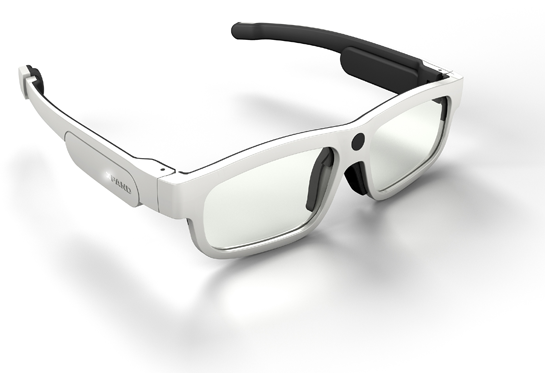
Apple TV, Apple keeps saying, is just a hobby. Google TV, to date, is a disappointment. But for tiny Roku, Internet TV is a success story. The company has moved more than 2.5 million of its little streaming boxes since 2008, founder/CEO Anthony Wood tells me, and sales were up by 300% in 2011. It now offers more than 400 channels, including biggies such as Netflix, Amazon, Hulu, and HBO GO, as well as many more offbeat options.
And now Roku is getting ready to release a version of its service that doesn’t require a box. If you think that means it’ll be built right into TVs–well, you’re on the right track, but that’s not quite it.
Building Internet services into a TV, Wood says, has some issues. For one thing, most TV makers don’t have as many major content deals as Roku does, and their user interfaces aren’t as simple. And even if they did have great content and great software, streaming technology is moving a lot more quickly than TV technology in general is: Unless you plan to upgrade your TV every couple of years, any embedded Internet technology it sports will start looking long in the tooth long long before the rest of the set feels obsolete.
So Wood’s company is creating a Roku that’s almost built into TVs. It’s a thumb-drive sized gizmo called the Roku Streaming Stick, and it incorporates the Roku software, service, and Wi-Fi connectivity, just like the boxes do.
The stick also has a connector that uses a new standard called Mobile High-Definition Link. MHL connectors, which are compatible with standard HDMI ones, are mostly meant to let you hook up a smart phone to a TV and watch video. But Roku is using the standard to put its streaming channels onto MHL-equipped TVs. (MHL provides power to the stick, so there’s no need to plug a brick into the wall.)
Roku wants to work with TV makers to offer the Streaming Stick as their Internet TV solution–either included with sets in the first place, as a “soft bundle” available at retail, or as an option. It’s signed up one big partner already: Best Buy, which will offer the Streaming Stick for its house-brand Insignia TVs. These sets will come with remotes that can control Roku as well as the TVs’ other functions.
Once you’ve popped the stick into a slot on the back of a TV, Wood told me, it’ll offer all the advantages of embedded Internet capability. But because it’s actually a self-contained add-on, you can replace it with improved models as they become available. (Over time, Roku plans to offer several versions, at prices from $50 to $100.)
The Streaming Stick won’t go on sale until the second half of 2012; Roku hopes to have other hardware partnerships lined up by then, and will also offer it in standalone form for use with any MHL-capable TV. It sounds like a clever way to bring the best single way to watch Internet TV on a TV to even more people.




 Last year, I attended the IFA consumer-electronics megaconference in Berlin. The exhibitions of the big manufacturers were utterly dominated by 3D TVs. All that blurry 3D hurt my eyeballs, put me in a bad mood, and prompted
Last year, I attended the IFA consumer-electronics megaconference in Berlin. The exhibitions of the big manufacturers were utterly dominated by 3D TVs. All that blurry 3D hurt my eyeballs, put me in a bad mood, and prompted 

 When it comes to 3D, I’m pretty much a worst-case scenario. I bristle at the fact that I’m expected to wear ill-fitting glasses over my regular glasses. I’ve sampled multiple 3D technologies and found
When it comes to 3D, I’m pretty much a worst-case scenario. I bristle at the fact that I’m expected to wear ill-fitting glasses over my regular glasses. I’ve sampled multiple 3D technologies and found  Recently, I drove a Mini Cooper for the first time. (Rented from Zipcar for $13/hour. Not bad.)
Recently, I drove a Mini Cooper for the first time. (Rented from Zipcar for $13/hour. Not bad.)
 Although I don’t understand why 3D HDTVs have become all the rage lately — I have yet to be impressed by one — it’s not preventing everyone from jumping into the fray.
Although I don’t understand why 3D HDTVs have become all the rage lately — I have yet to be impressed by one — it’s not preventing everyone from jumping into the fray. 